Sitemap
A list of all the posts and pages found on the site. For you robots out there is an XML version available for digesting as well.
Pages
Archive Layout with Content
Posts by Category
Posts by Collection
Short CV
Markdown
Page not in menu
Page Archive
Portfolio
Publications
Sitemap
Posts by Tags
Talk map
Talks and presentations
Teaching
Terms and Privacy Policy
Mass media
Jupyter notebook markdown generator
Posts
Ocells de temporada: la temporalitat de la migració com a factor en la inserció social i econòmica dels migrants
Published:
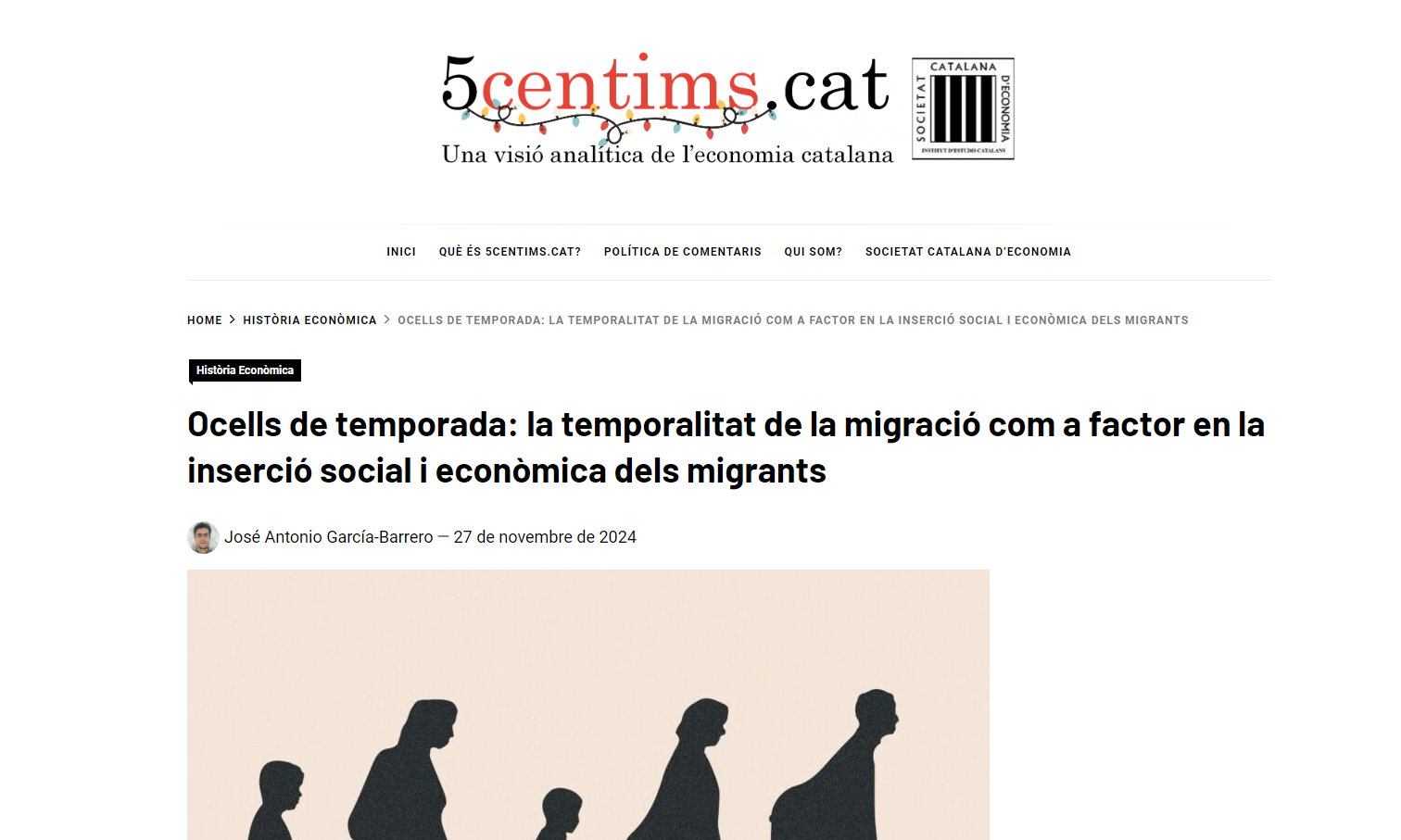
5 Cèntims blog of the Catalan Economic Society
LinkI had the opportunity to talk about my work published in the Economic History Review and Cliometrica, derived from my doctoral thesis, on the blog of the Catalan Society of Economics.
Reflections on the Economic History Society’s Inaugural PhD Thesis Workshop
Published:
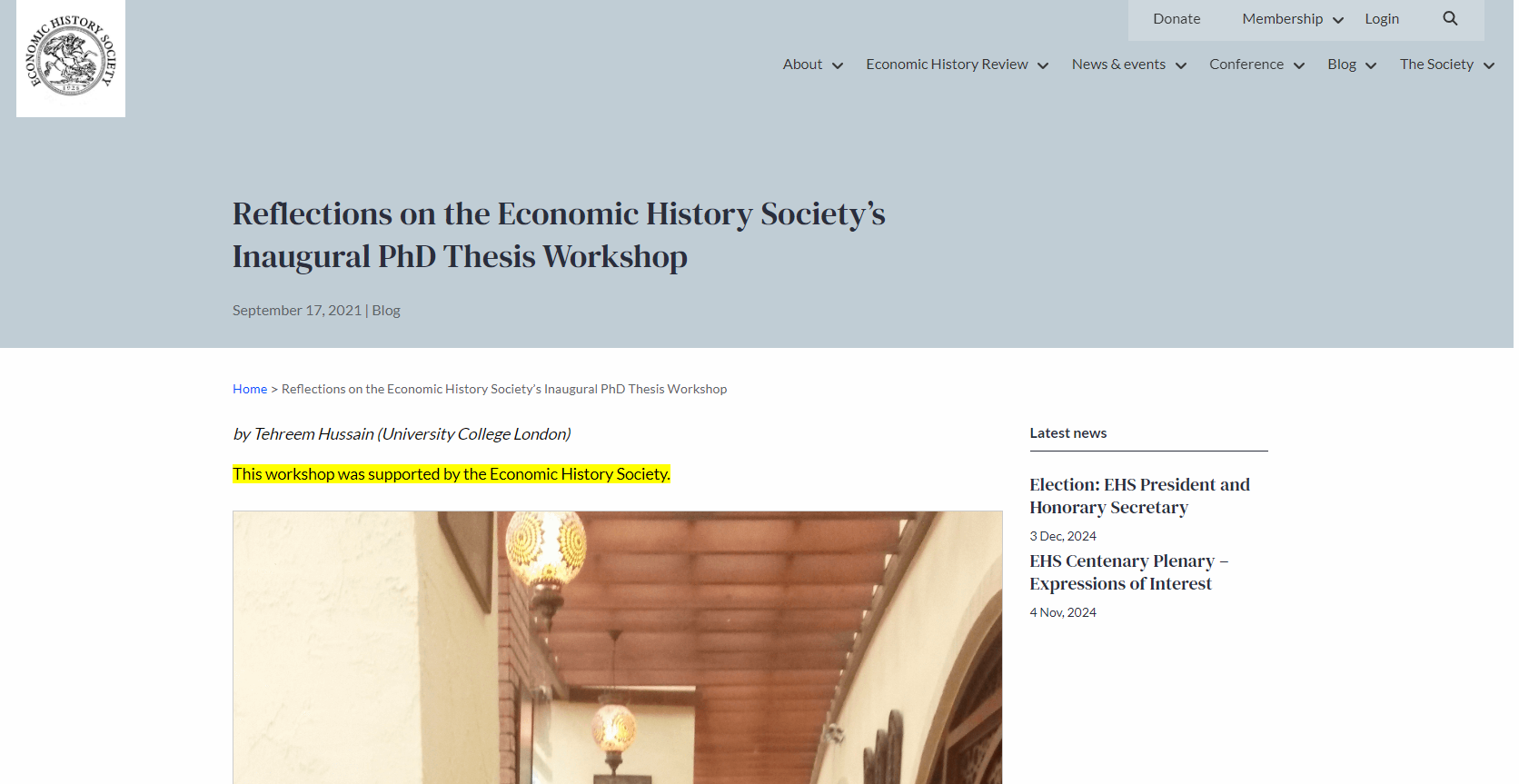
The Long Run Blog, Economic History Society
LinkTehreem Husain of University College London talks about the Economic History Society’s EHS PhD Workshop, where I had the opportunity to present my ongoing research.
portfolio
Portfolio item number 1
Short description of portfolio item number 1
Portfolio item number 2
Short description of portfolio item number 2 
publications
The management of labour recruitment: The hotel chains during the Spanish tourism boom, 1959-1973
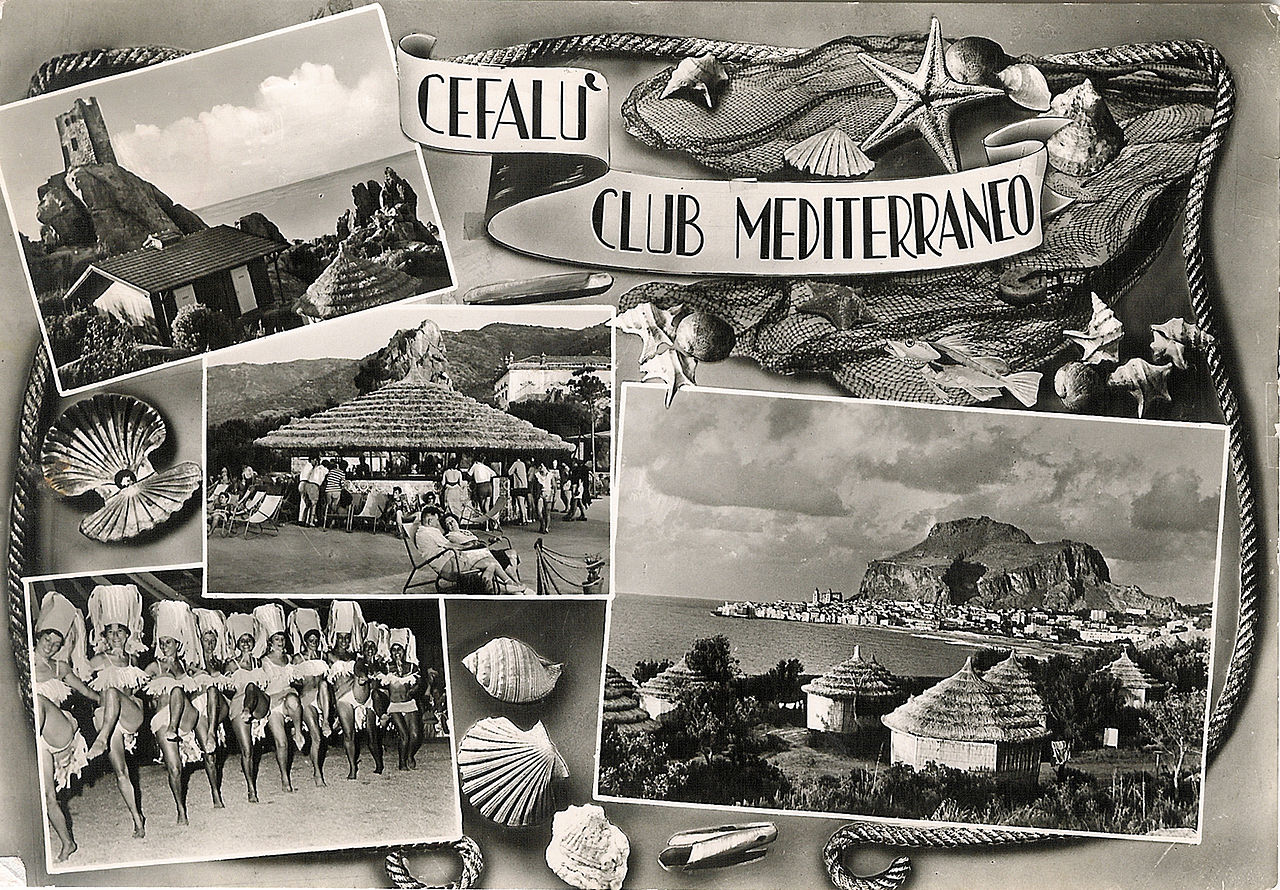
Published in Annals of Tourism Research
Author/s: José Antonio García-Barrero & Carles Manera
2021 </p
This paper explores the labour management of hotel chains during the Spanish tourism boom, a period characterized by high labour shortages. Focusing on the behaviour of three prominent emerging hotel chains in the Balearic Islands, we adopt a micro-comparative approach to examine their payrolls. Our findings suggest that the economic and geographical characteristics of the areas where they operated were crucial to their decisions. Firms located in populated areas developed channels of seasonal labour that supplied migrant workers through chain migration and kinship links. Conversely, firms in areas of intense landscape transformation pursued recruitment at origin in specific towns on mainland Spain or in foreign countries. This strategy played a key role in the development of new international tourism destinations.
</article> </div>Birds of passage: literatura y cine para la enseñanza de historia económica del turismo y las migraciones
Published in Superando el covid-19 en las aulas de historia económica
Author/s: José Antonio García-Barrero
Editor/s: Leonardo Caruana de las Cagigas & Carlos Larrinaga
Editorial: Universidad de Granada
2022 </p
En este texto propongo materiales provenientes de la literatura y el cine para la enseñanza de la interrelación del turismo y las migraciones en el formato de clase práctica para alumnos de grado en economía e historia, con especial foco en las asignaturas de Historia Económica de España, Historia Contemporánea de España e Historia Económica Mundial. Más concretamente, presento un modelo de práctica en el cual se incorporan algunos de los materiales sugeridos en el contexto de la historia económica de Cataluña y las Islas Baleares adaptables a otros contextos históricos y geográficos. Utilizando la proyección de la película La piel quemada (1967) y fragmentos de la narrativa contemporánea mallorquina propia de la Generació dels 70 provenientes de textos de Guillem Frontera y Antònia Vicens y testimonios orales, se busca crear un formato de práctica que acerque al alumnado el boom turístico de los sesenta en el archipiélago. El objetivo de esta práctica es que el alumnado pueda relacionar conceptos de la economía del turismo y de los mercados de trabajo con la historia contemporánea y la sociología de las migraciones. Así, conceptos como estacionalidad turística, demanda de trabajo o productividad del trabajo se presentarán de la mano de otros como desigualdades de género, escasez de vivienda o integración socio-cultural. Al mismo tiempo, la práctica también busca que el alumnado pueda relacionar estas cuestiones con debates de carácter histórico y actual sobre la evolución del turismo y las políticas migratorias a escala local e internacional.
</article> </div>La génesis del mercado de trabajo turístico de sol y playa en España, 1940-1962.
Published in Estudios Turísticos
Author/s: José Antonio García-Barrero
2022 </p
This article analyses the first stages of the process of labour market formation in the sun and sand tourism industry in Spain. The study focuses on the impact of the emergent sun and sand mass tourism in the model of industrial relations inherited from the pre-Civil War and the first Franco period. To do so, firstly it shows the characteristics of the post-war tourism labour market, the labour regulatory framework established by the dictatorship and its adaptation to the emergent new tourism model. Secondly, the paper explores the effect of the economic recovery in the mid-fifties on the characteristics of the labour markets of the tourism industry in the regions experiencing the Spanish tourism boom.
</article> </div>From circular to permanent: The economic assimilation of migrants during Spain’s rural exodus, 1955-1973

Published in Economic History Review
Author/s: José Antonio García-Barrero
2024 </p
Circular migration has played a substantial role in the assimilation process of rural–urban migrants in Spain across the twentieth century. This paper analyses the short-term impact of the temporariness of this type of migration in the economic assimilation of migrants during the rural exodus, 1955–73. More specifically, I study this process in one key scenario – the Spanish tourism boom. Using a novel micro-dataset, results show that the temporariness was a key factor that constrained the capacity of migrants to achieve income growth. Thus, the incentives to persist with circular migratory movements and the socio-economic constraints on permanent settlement had significant adverse consequences. These migrants sorted into lower-income occupations and had lower incentives and chances to acquire host-specific human and social capital in comparison with permanent migrants. As a result, circular migrants registered lower occupational attainment leading to a higher income gap with natives and permanent migrants as the years of circular migration increased in number. These results indicate that most migrants had fewer chances than natives of taking advantage of the process of rapid structural change not solely because of lower human and social capital factors but also because of the temporariness of their migration.
</article> </div>The formation of the tourism labour market in Spain, 1955-1973
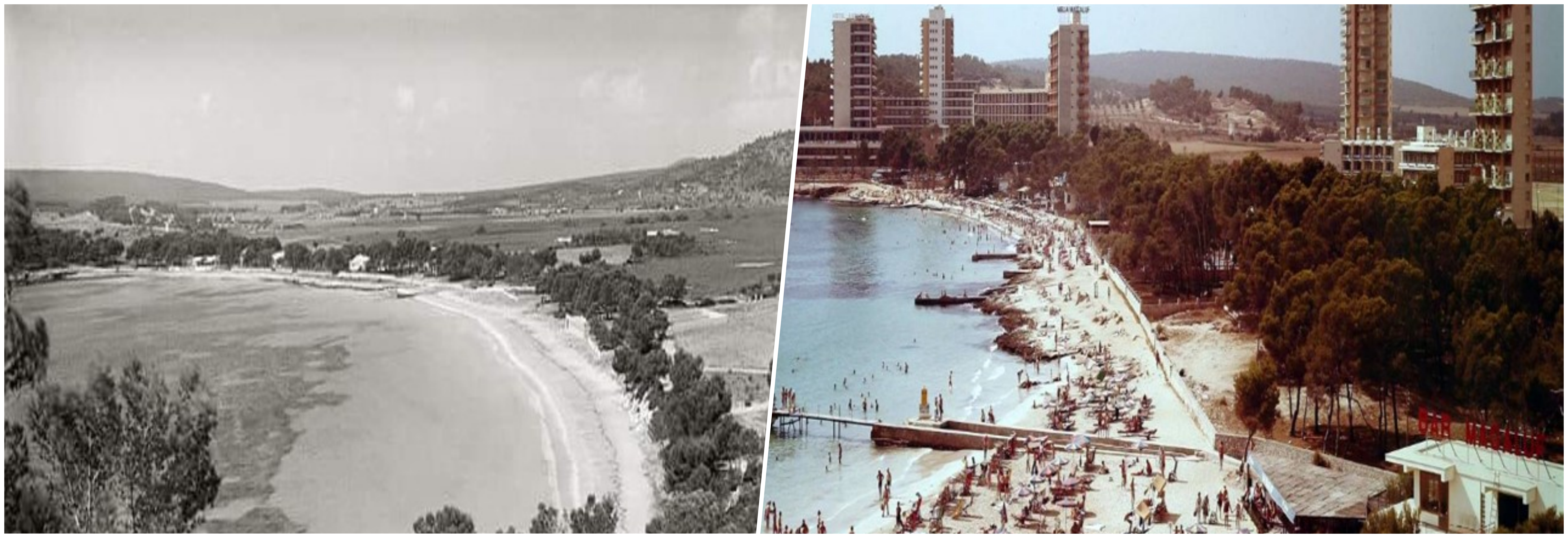
Published in Revista de Historia Económica - Journal of Iberian and Latin American Economic History
Author/s: José Antonio García-Barrero
2024 </p
This paper studies the process of labour market formation in the tourism industry in Spain. Results show that tourism regions diverged in their capacity to attract local labour, a factor that led to different compositions of the workforce. In the most dynamic regions, circular migration became a key factor as a result of housing shortages, seasonality and labour policy. Tourism agents promoted these flows by different mechanisms such as recruitment at origin and temporary accommodation. Migration benefited growth of firms, natives’ upward mobility and migrants’ accumulation of capital. However, inequality in the regional labour market and host society increased.
</article> </div>Determinants of seasonal circular migration during Spain’s rural exodus, 1955-1973
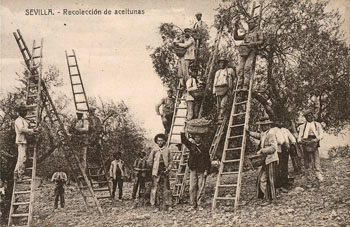
Published in Cliometrica
Author/s: José Antonio García-Barrero
2024 </p
Internal circular migration has historically played an important role in the mobility patterns and assimilation of migrants in Western societies, with a particularly significant and persistent role in Spain during the nineteenth and twentieth centuries. This article analyses the determinants of this migration path during the Spanish rural exodus, focusing on a critical scenario: the Spanish tourism boom in the Balearic Islands. The results suggest that the tourism industry offered abundant low-skilled job opportunities with very low barriers to entry, rewarded with higher wages than in the regions of origin. Thus, the emerging tourism phenomenon represented a significant opportunity for those more penalised by the rural penalty, such as the very poor households of southern Spain from isolated districts. For these migrants, the findings suggest that the factors that increased the likelihood of engaging in circular migration were both ‘voluntary’, such as job and investment opportunities in the origin, and ‘involuntary’, linked to the seasonality of the host labour market, labour regulations and housing shortages. These constraints to permanent settlement were easier to overcome for those who could rely on migrant networks established in the pre-tourism era and had gendered consequences.
</article> </div>Factors de resiliència rural a les Illes Balears, 1950-1991
Published in Estudis d'Història Agrària
Author/s: José Antonio García-Barrero
2024 </p
This article analyses the impact of the first tourism boom, 1955–1973, and the second, 1985–1991, on rural Mallorca. The results suggest that during the first period, the rural penalty increased very significantly, triggering an increase in intra-provincial migration. Thus, rural resilience was not based on the retention of young natives, but on the substitution of the local population by internal migrants from the Balearic Islands and mainland Spain. Rural municipalities with a higher degree of economic diversification and access to urban markets had a greater capacity for the retention of young natives and demographic growth.
</article> </div>The Legacy of Temporary Employment in Francoist Spain
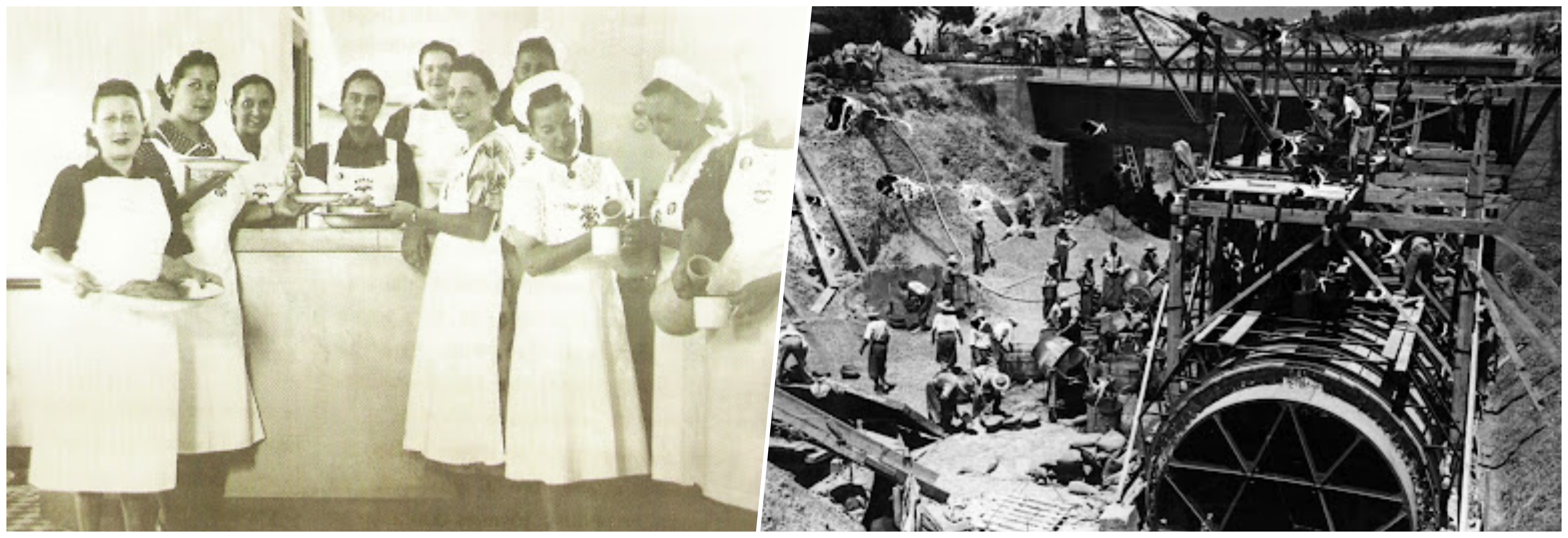
Published in Social Science History
Author/s: José Antonio García-Barrero
2025 </p
This article revisits the levels of temporary employment in Franco’s Spain from an international perspective. Using a wide range of unexploited or novel data, I shed light for the first time on the incidence of temporary employment during the late Franco dictatorship, 1959-1975. The results show that fixed-term contracts reached 20-30% during this period and were not only concentrated in unstable employment branches such as agriculture, tourism and construction. The analysis suggests that temporary employment was widespread in many service and industrial branches. Furthermore, external numerical flexibility was not confined to fixed-term contracts. Outsourcing, self-employment, family work and the underground economy, particularly home work, played an essential role in many branches of the economy. In this context, women’s work constituted a key source of flexible employment for many branches of the Spanish economy. As a result, Spain was already an anomaly in the international context in terms of the prevalence of temporary work and labor regulation of temporary employment. This evidence suggests a reframing of the debate on labor market functioning during the Francoist period and its legacy.
</article> </div>Historical industry in a service economy. Industrial success and export vocation of the footwear districts: the Mallorca island as a model
Published in An Economic History of the Spanish Industrialization
Author/s: Carles Manera Erbina & José Antonio García-Barrero
Editor/s: Jordi Catalan & Marc Prat
Editorial: Routledge
2025 </p
The Balearic Islands are a region of Spain with a characteristic that defines it in the economic panorama: it is a leader in mass tourism within the framework of the European Union. With a census population of 1.2 million inhabitants in 2024, the islands receive about 16 million tourists per year (the data is from 2023): more than 20% of all tourism that arrives in Spain. Therefore, we are facing one of the most important economies in mature tourism services, one of the most potent tourist archipelagos in the world. With clear business pioneering, Spain’s most prominent hotel companies are firms based in the Balearic Islands, which forged their capital from other productive sectors. It, however, infers significant ecological externalities derived from this development model: demographic over-saturation, enormous consumption of natural capital and socio-cultural dislocations, as clear exponents of the other side of economic growth. In this context, the work presents the importance of the historical industrial trajectory in the Balearic Islands. It emphasizes, above all, the resistance capacity of footwear in the current economic structure of the Balearic Islands due to its historical ability to work with external markets and adapt to demand requirements.
</article> </div>The role of piece rates for home-work in wage formation and living standards in the footwear industry in Spain: long-term evolution and research agenda
Published in A Historical Casebook of Wage Formation: Wage determination and wage bargains of the preindustrial World
Author/s: José Antonio García-Barrero & Carles Manera Erbina
Editor/s: Judy Stephenson, Luca Mocarelli & Giulio Ongaro
Editorial: Palgrave
2025 </p
The prevalence of piece rates paid for home-work was a significant characteristic of labour markets in southern Europe during the late XIX and XX centuries. This chapter analyses the role of these payments in the Balearic footwear industry during this period. Our study reveals their vital role in management strategies, household budgets and wage determination, frequently embedded within the underground economy. Additionally, the findings suggest that piece rates paid by firms for home-work influenced the drive to adopt labour-saving machinery. To conclude, we examine the characteristics of a novel archival source for examining home-work in the textile and footwear sectors in Spain during the Francoist period and their related potential new avenues of research.
</article> </div>talks
La terciarización de las economías desarrolladas: una lectura a partir de la historia de una economía turística en proceso de maduración, el caso balear (1985 – 2008)
Published:
La formación del mercado de trabajo turístico de Baleares Escasez de trabajo, rotación y precariedad laboral durante el boom turístico, 1959-1973
Published:
Immigrant occupational attainment in periods of rapid structural change: the Balearic Islands during the tourism boom, 1969
Published:
La formación del mercado de trabajo turístico en Baleares. Escasez de trabajo, rotación y precariedad laboral durante el boom turístico, 1959-1973
Published:
La formación del mercado de trabajo turístico en las Islas Baleares: escasez de trabajo y desigualdad laboral, 1959-1973
Published:
From circular to permanent: Migrant labour market attainment during the Spanish tourism boom, the Balearic Islands, 1959-73
Published:
From circular to permanent: Migrant labour market attainment during the Spanish tourism boom - the Balearic Islands, 1959-73
Published:
Birds of passage: literatura y cine para la enseñanza de historia económica del turismo y las migraciones
Published:
Mediterranean Crossroads: Determinants of circular migration in Spain, 1955-1973
Published:
Mediterranean Crossroads: Determinants of circular migration in Spain, 1955-1973
Published:
Mediterranean Crossroads: Determinants of circular migration in Spain, 1955-1973
Published:
Determinantes de la segmentación ocupacional y de género durante la formación del mercado de trabajo turístico de las Islas Baleares, 1959-1973
Published:
Mediterranean Crossroads: Determinants of circular migration in Spain, 1955-1973
Published:
¿Exportando mercados de trabajo? Migración haitiana, cadenas hoteleras españolas y desarrollo turístico en el Caribe: 1919-2020
Published:
The role of the shadow economy in real wage formation amongst workers of the Spanish textile and footwear industry, 1955-1973
Published:
Movilidad ocupacional en períodos de cambio estructural de baja intensidad tecnológica: las Islas Baleares durante el boom turístico, 1959-1973
Published:
Mercados de trabajo e internacionalización turística, 1959-2018: Las Islas Baleares como modelo
Published:
The role of the shadow economy in real wage formation amongst workers of the Spanish textile industry, 1955-1973
Published:
Determinantes de la migración circular en España, 1955-1973
Published:
The long-term impact of temporary employment in Franco’s Spain. An international perspective, 1955-2022
Published:
The role and determinants of women’s work in the Spanish textile and footwear shadow economy, 1959-1973
Published:
Impacto a largo plazo de la migración circular interna en la movilidad social, 1955-2000
Published:
teaching
Lecturer on the course Introduction to History
2017-2018. Undergraduate course, Degree in Business and Administration, University of Barcelona
Lecturer on the course Techniques in Work and Communication
2018-2019. Undergraduate course, Degree in Industrial Relations, University of Barcelona
Lecturer on the course Economic History of Spain
2018-2020. Undergraduate course, Degree in Economics, University of Barcelona
Lecturer on the course Modern Political and Social History
2020-2021. Undergraduate course, Degree in Public Management and Administration, University of Barcelona
